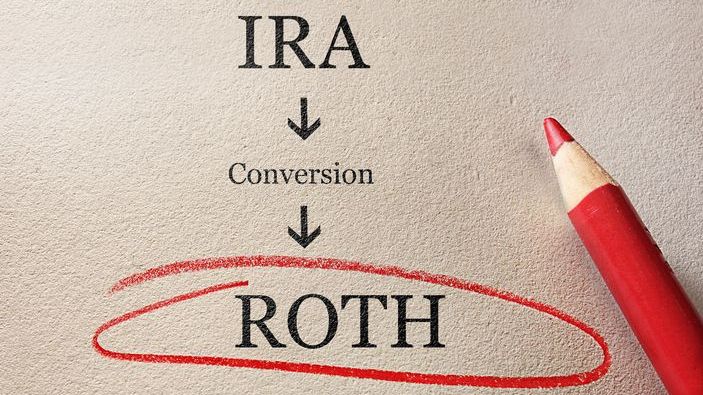You can reduce the impact that taxes have in retirement by converting pre-tax savings into Roth assets. Doing so not only unlocks future tax-free growth, but also helps you minimize or avoid required minimum distributions (RMDs).
However, converting a large IRA balance like $650,000 all at once would trigger a significant tax bill in the year of the conversion. Instead, you may be able to reduce the overall tax burden by gradually converting your IRA over several years. This won’t eliminate taxes, but it can give you some control over the timing and amount of taxes you pay. It can also be useful for estate planning, since your potential heirs would inherit tax-free assets. Consult a financial advisor to determine whether a Roth conversion strategy makes sense for you.
Tax Impact of RMDs
Anyone who saves for retirement using a traditional IRA, 401(k) or similar pre-tax account must begin withdrawing their money after they turn age 73 (75 for people who turn 74 after Dec. 31, 2032). While RMDs are mandatory for pre-tax accounts, some retirees would rather not take them if they don’t need the income. That’s because when the income from mandatory withdrawals is added to their other income, it can push them into a higher income tax bracket and increase their overall tax bill.
For example, say that you have $650,000 in a traditional IRA at age 64. If your account grew at an average rate of 7% per year, it would be worth approximately $1.19 million by the time you hit age 73. As a result, your first annual RMD would be around $45,000.
But if you have $75,000 in taxable income from other sources and your tax filing status is single, your $45,000 RMD would push you into the 24% tax bracket (assuming 2024 tax rates) and increase your income tax liability.
A financial advisor can help you plan for RMDs and explore other tax planning strategies for retirement.
Roth Conversions

But a Roth conversion can also be expensive because the money you convert is treated as taxable IRA withdrawals in the year that the conversion is completed. For example, converting a $650,000 IRA to a Roth all at once would automatically increase a single filer’s marginal tax rate to 37% – the highest marginal tax rate in 2024. Converting $650,000 alone would trigger an income tax bill of approximately $200,000, not including any other income tax you may pay.
You may be able to manage and potentially reduce these taxes by gradually converting your pre-tax retirement savings over the course of several years. The idea is to convert just enough pre-tax money each year to keep your taxable income within your current marginal tax bracket. For example, if you have $75,000 in taxable income, you are in the 22% bracket for 2024. If you convert $25,525 from your IRA, that would increase your income to $100,525 – the very top of the 22% bracket.
Of course, while you are gradually converting your traditional IRA into a Roth account, the funds remaining in your IRA would continue to grow. By the time you reach age 73, your IRA would still have a considerable amount of money in it. However, your RMD would be reduced, giving you more tax flexibility going forward. If you’re unsure of how much to convert and when, talk it over with a financial advisor.
Roth Conversion Limitations

Conversion is a potent tool. Among other benefits, once you convert funds from your IRA into a Roth, you can pass them to heirs tax-free. Still, you can’t completely avoid paying taxes on IRA withdrawals using Roth conversion or other means. Roth conversion can only help you manage and potentially reduce the income taxes on withdrawals from your savings.
Any Roth conversion strategy also makes a number of assumptions that may not turn out to be accurate. For instance, tax brackets adjust annually, so the tax brackets when you start taking RMDs will be different. Similarly, investment returns fluctuate and may not be generated as expected.
The five-year rule for Roth conversions is another important consideration. The rule dictates that you must wait five years after a Roth conversion to withdraw the money or you’ll face a 10% early withdrawal penalty. Then again, this provision wouldn’t apply to you in our hypothetical scenario, since people who are 59 ½ or older are no longer subject to early withdrawal rules.
Finally, Roth conversions may make the most sense if you expect to be in a higher tax bracket after you retire. If you’ll your marginal tax rate falls in retirement, you may be advised to keep the funds in your IRA and pay taxes on the withdrawals later on. That’s where working with a financial advisor and planning ahead can potentially pay dividends.
Bottom Line
A strategy of gradually converting funds from an IRA into a Roth account can help you manage and minimize the taxes you pay on the conversion. The basic idea is to convert enough money each year to raise your taxable income to the top of your current tax bracket, but no more. This avoids the big one-time tax hit of converting the entire IRA at once, while moving as much money as possible in the Roth account where it’s not subject to RMDs. Avoiding RMDs is one benefit of Roth conversion, but the strategy also can potentially help with estate planning.
RMD Planning Tips
- To calculate your RMD, you’ll first need to look up your account balance (as of Dec. 31 of the previous year). Most people will then divide that value by the “life expectancy factor” that corresponds with your age. You’ll find this figure on the IRS Uniform Lifetime Table. For example, a 73-year-old has a life expectancy factor of 26.5. As a result, they would divide their account balance by 26.5 and get their RMD amount for that particular year. Meanwhile, SmartAsset has an RMD calculator that can help you estimate how much your first RMD will be and when it must be taken.
- When you are planning how to avoid RMDs, a financial advisor can be an important source of information and insight. Finding a financial advisor doesn’t have to be hard. SmartAsset’s free tool matches you with up to three vetted financial advisors who serve your area, and you can have a free introductory call with your advisor matches to decide which one you feel is right for you. If you’re ready to find an advisor who can help you achieve your financial goals, get started now.
Photo credit: ©iStock.com/FG Trade, ©iStock.com/zimmytws, ©iStock.com/PeopleImages
Read the full article here












